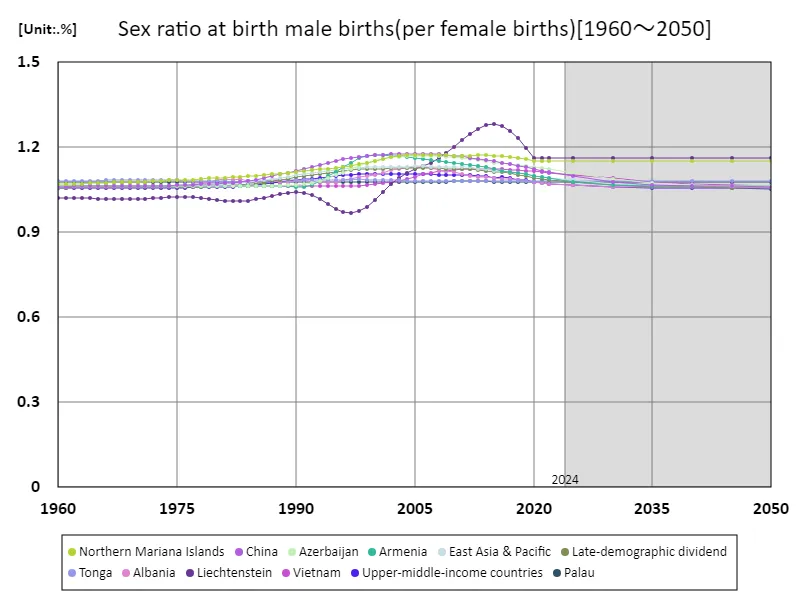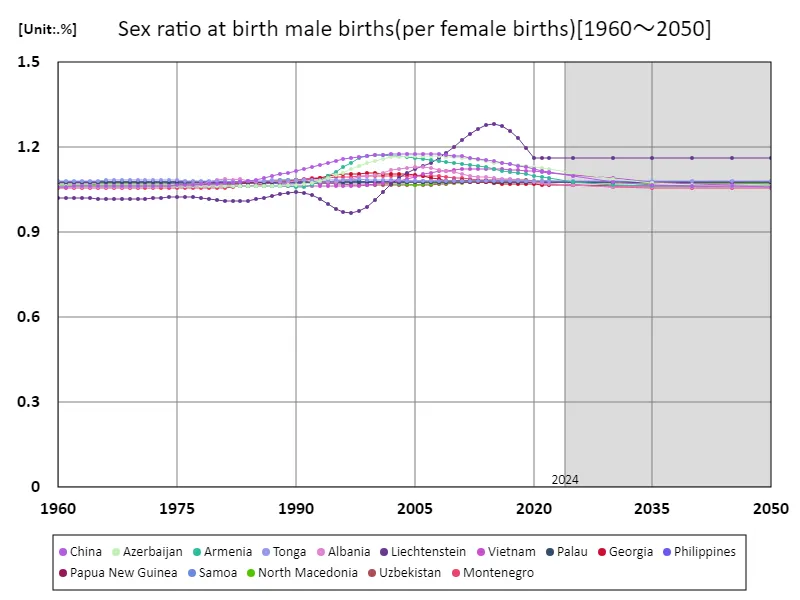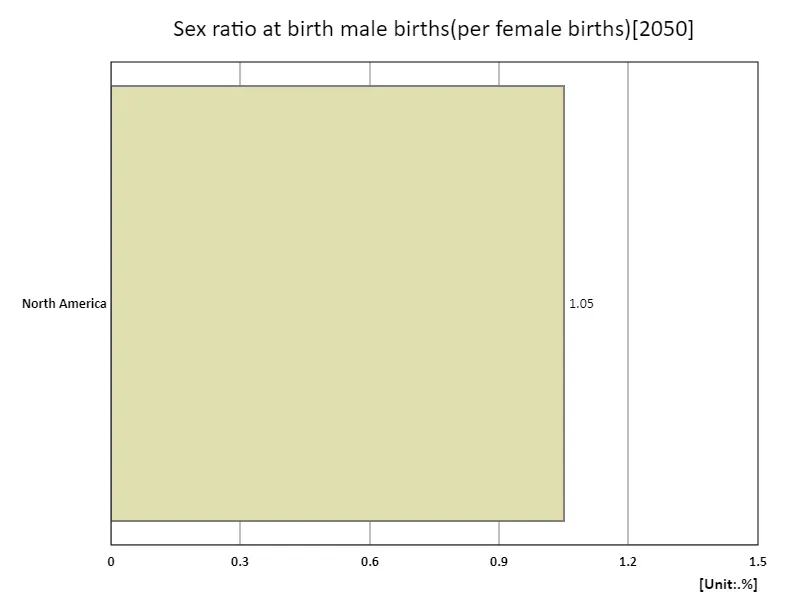Abstract
The sex ratio at birth, the number of boys born per girl, typically averages around 1.05 globally. However, it can vary by country, influenced by cultural, social, and biological factors. Historically, countries with skewed sex ratios, like China and India, often reflect gender preference and selective practices. Liechtenstein’s higher rate of 1.16 in 2050 may suggest shifts in demographic trends, such as increased immigration, changing family dynamics, or advanced medical practices. These trends underscore the complexities of population dynamics and their socioeconomic impacts.
Number of male births (per female birth)
Liechtenstein’s peak sex ratio at birth of 1.28 boys per girl in 2015 reflects a global trend of fluctuations influenced by societal, economic, and medical factors. Since then, its ratio has decreased to 90.7% of that peak, suggesting shifts in demographic patterns. Historically, sex ratios at birth tend to hover around 1.05 globally, but certain countries experience deviations due to cultural preferences or selective practices. As birth rates decline and life expectancy rises, these trends highlight the complexity of population dynamics and their long-term socioeconomic consequences.


The maximum is 1.28%[2015] of Liechtenstein, and the current value is about 90.7%
Number of boys born per girl born (Worldwide)
Liechtenstein’s peak sex ratio at birth of 1.28 boys per girl in 2015 reflects unique demographic trends. This ratio, higher than the global average of 1.05, suggests societal influences, such as cultural preferences or selective practices. Currently at 90.7% of its peak, Liechtenstein’s rate indicates a slight decline, possibly due to changing social dynamics, healthcare advancements, and lower birth rates. Globally, sex ratios have remained relatively stable, but regional variations, influenced by economic, political, and cultural factors, continue to shape birth trends and population patterns.


The maximum is 1.28%[2015] of Liechtenstein, and the current value is about 90.7%
Number of male births per female birth (world, latest year)
In 2050, Liechtenstein’s sex ratio at birth stands at 1.16 boys per girl, surpassing the global average of 1.05, reflecting unique demographic characteristics. The 196% figure highlights the variation in sex ratios across countries. Historically, ratios near 1.05 are typical worldwide, but deviations arise due to cultural, social, and medical factors. Liechtenstein’s relatively higher rate suggests localized factors, such as migration patterns or selective practices. These trends emphasize the complexity of global birth ratios and the diverse influences shaping population dynamics.


The maximum is 1.16% of Liechtenstein, the average is 1.05%, and the total is 195%
Number of male births (per female birth) (region, latest year)
By 2050, East Asia and the Pacific will have a slightly higher sex ratio at birth, with 1.06 boys per girl, compared to the global average of 1.05. This reflects regional trends, where cultural preferences and selective practices can influence birth ratios. The total figure of 15.7% indicates a modest deviation, showing that while the global norm persists, East Asia and the Pacific may experience slight imbalances. These trends align with broader demographic shifts, including changing fertility rates and rising life expectancy, which together shape the evolving population dynamics in the region.


The maximum is 1.05% of North America, the average is 1.05%, and the total is 1.05%



Comments